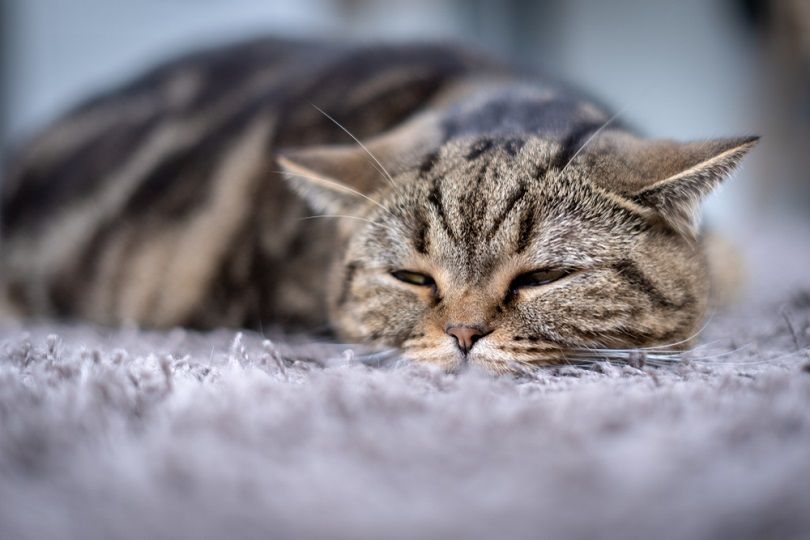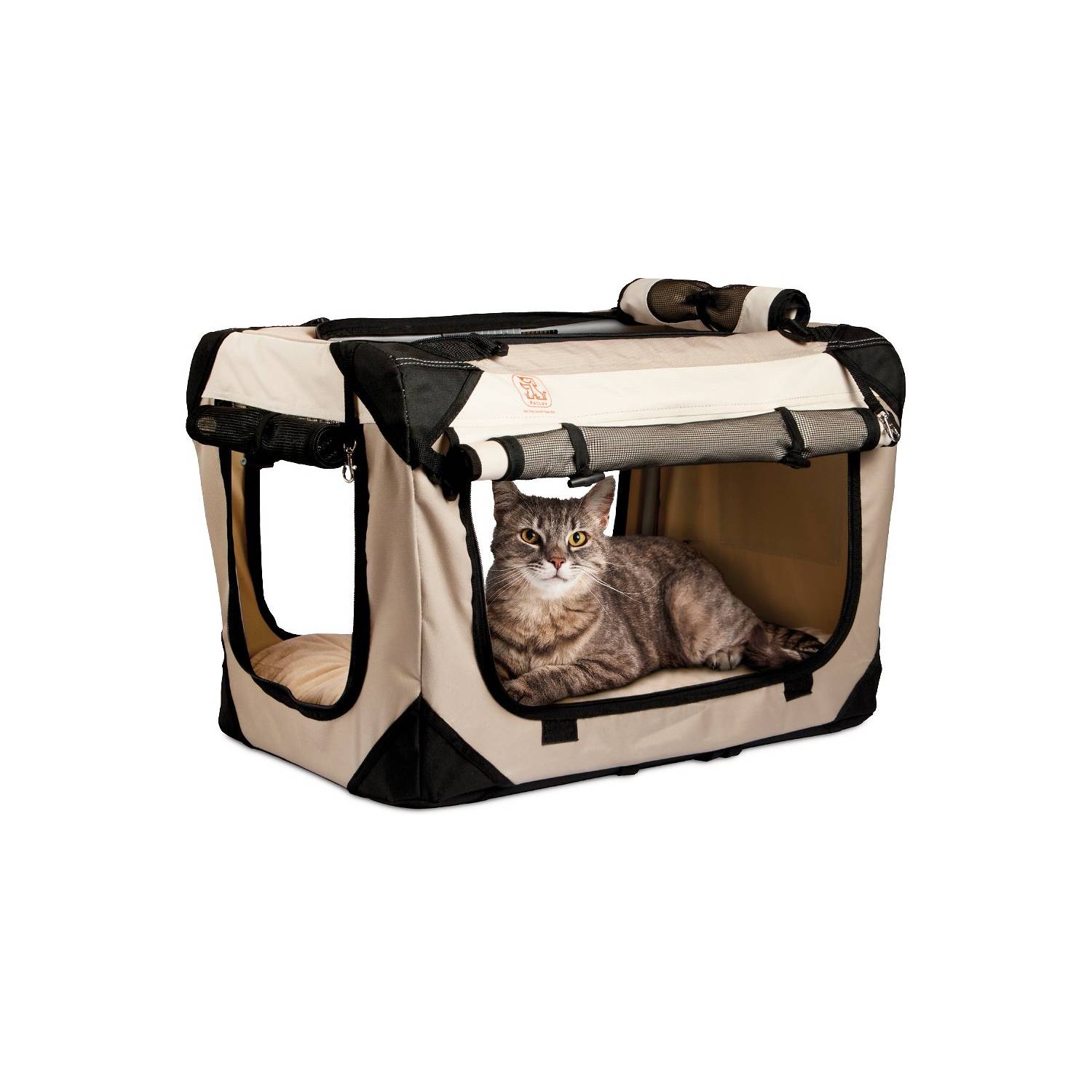How to Give a Cat a Bath Without Water: 5 Vet-Approved Steps
Updated on
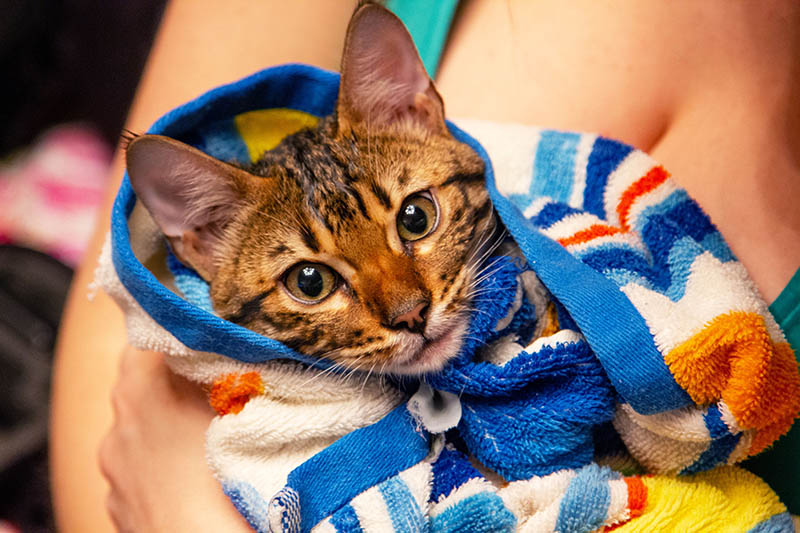
Most cats are known to be very vocal opponents of baths. After all, many cats aren’t that into getting wet or swimming. The good thing about cats is they are self-cleaning animals that are fastidious about their personal hygiene. Unfortunately, not all cats got the memo. Sometimes, bathing a cat is a necessity. Some cats lack the motor skills to properly clean themselves, while others lack the motivation. Some cats physically can’t bathe themselves due to their size.
Sometimes, things happen and your cat may end up needing a bath. If your cat is stressed by baths, though, knowing how to bathe your cat without using water can really come in handy. This article can help you get started! Waterless baths can greatly reduce your cat’s stress level associated with baths and help your cat get used to having a little assistance with hygiene from time to time.
Supplies You’ll Need
- Waterless cat shampoo
- Cat-safe fragrance-free wipes
- Grooming brushes
How to Give Your Cat a Waterless Bath
1. Brush off loose fur.
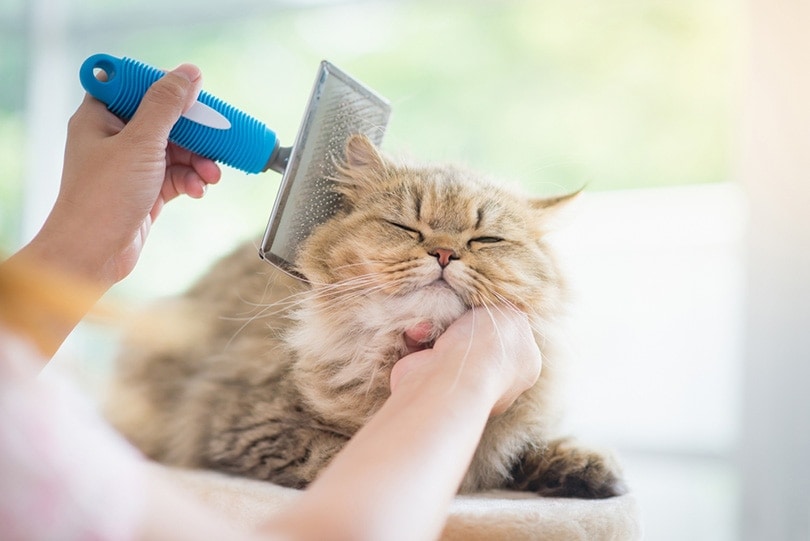
The type of brush you’ll use for your cat will vary based on your cat’s coat length and type. To remove loose fur, though, a basic slicker brush will likely suffice. This will be the first of two brushings if your cat will allow it, so your goal should just be to remove loose hair and any loose debris that may be stuck in your cat’s fur, like small bits of litter. This round of brushing should be quick, easy, and low-stress for you and your cat.
2. Wipe your cat down.
Using cat-safe fragrance free wet wipes, wipe your cat down from head to toe. Avoid the sensitive eye area unless the wipes specifically say they are safe for use around the eye area. Wipes won’t get a deep clean, but they’re a great way to quickly remove surface dirt from your cat’s coat. They can also help begin to loosen debris that is stuck onto the skin or coat. Keep in mind that for some stuck-on waste and debris, it may take multiple rounds of brushing or wiping to loosen the debris enough to get it comfortably removed without hurting or stressing your cat.
3. Use waterless shampoo.
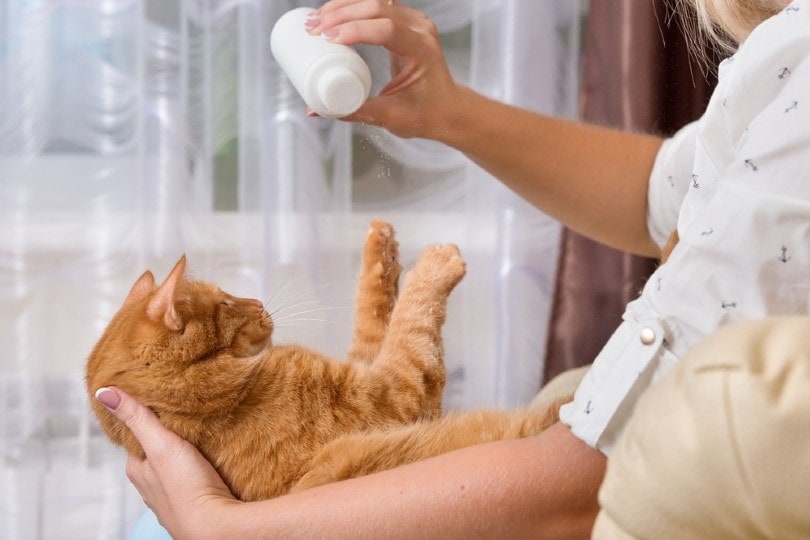
Waterless shampoo for cats is an easy way to get your cat clean without having to fully soak your cat in water or rinse them. Waterless shampoo is intended to be used without water, so it does not require rinsing. It can cut the time it takes to bathe a cat down significantly and causes far less stress. For stuck-on debris, you can apply a little waterless shampoo and allow it to sit for a couple of minutes, and then gently begin working at the debris to get it removed from the fur or skin.
There's nothing quite like a happy, clean pet. But you'll need a great shampoo to make that happen. Our Hepper Cucumber & Aloe Dry Shampoo is easy to use and gentle on your pet's skin. Plus, you'll love the fresh, clean scent and pH-balanced, pet-safe formula!
4. Give a more in-depth brushing.
Allow your cat to dry from the wipes and waterless shampoo for a couple of minutes and then begin brushing. If your cat has mats and tangles, you can use a grooming comb or mat remover to start getting them out. However, keep in mind that cats have thin skin that can be easily torn by rough handling, so it’s important to work slowly and gently to remove tangles and mats to avoid injuring your cat. If you handle your cat roughly, you may not even have to break the skin to leave your cat unwilling to work with you on brushing in the future. If needed, take lots of breaks and come back to the brushing task throughout the day to keep your cat comfortable.
5. Repeat with wipe or waterless shampoo if needed.
For an especially yucky kitty, go back over with multiple rounds of wipes or waterless shampoo if needed. This is more likely to go over with cats that are tolerant of being handled than with cats that you’re doing this process on because they are intolerant of general handling.
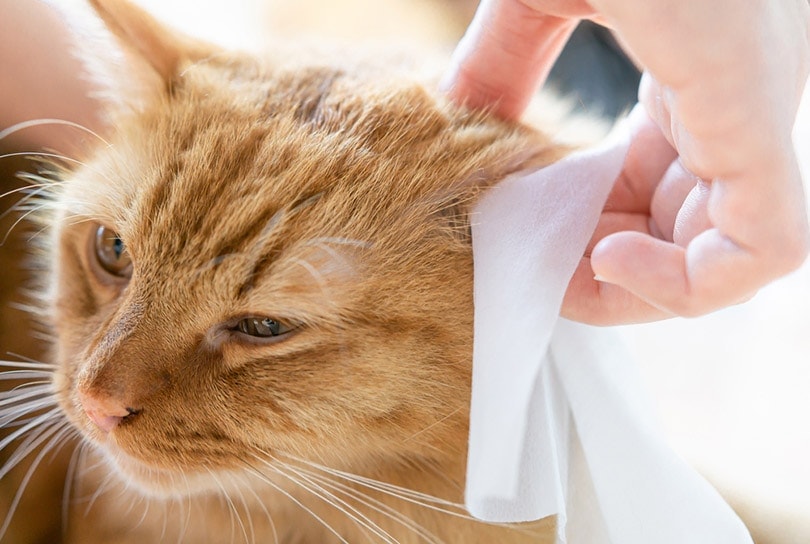
An Extra Note
If your cat has notable mats or tangles that you are struggling to release, it’s important to take your cat to a groomer or vet who can safely work these mats out without injuring your cat. If you are giving your cat a waterless bath because they have scabs or other skin issues, you should skip the bath and have your cat examined by a vet first. There are multiple skin issues that can cause skin irritation, and using bathing chemicals on them can do more harm than good.
 In Conclusion
In Conclusion
Giving your cat a waterless bath is a wonderful way to make the bathing experience less stressful for your cat. If your cat tends to get waste and debris stuck in their fur, you may talk to your vet about long-term management options. Some cats require some professional interventions, like trims around the bottom, that can make maintaining hygiene easier for you and your cat.
Good luck with giving your cat a cleanse using these steps! We hope this article made the idea of a waterless bath less daunting or confusing. We bet your cat will appreciate the extra effort in helping it stay clean.
Featured Image Credit: Kabachki.photo, Shutterstock



